Underwater drones, often referred to as remotely operated vehicles (ROVs) or autonomous underwater vehicles (AUVs), have become integral in exploring the mysterious depths of our oceans. These remarkable machines are specifically designed to operate underwater, equipped with the tools needed to conduct various research and exploration tasks efficiently.
The concept of underwater drones isn’t exactly new. They’ve been around for decades, initially developed for military purposes. Over time, their applications have expanded, and they’ve evolved into sophisticated devices used in a variety of fields. From surveying vast marine environments to assisting in complex underwater constructions, their utility and effectiveness have only grown.
In today’s world, underwater drones play a crucial role. With the increasing need to understand underwater ecosystems and the desire to tap into marine resources, these drones provide the perfect solution. They offer a safer and more cost-effective way to conduct deep-sea explorations compared to manned missions.
The fascination with underwater drones comes from their ability to enter places humans find challenging to go. Whether it’s capturing footage of an elusive species or mapping the ocean floor, the impact on marine research and environmental monitoring is absolutely game-changing.
How Underwater Drones Work: An In-Depth Look
The mechanics behind underwater drones are fascinating. These machines are built with robust technologies that allow them to navigate and perform tasks in challenging underwater environments. It starts with their construction; most are made from durable materials to withstand high pressure and corrosive saltwater.
Central to their operation is the propulsion system, which varies depending on the model. Some use propellers similar to those found in boats, while others have thrusters that allow for more precise movements. Being able to maneuver accurately is essential for tasks like inspecting shipwrecks or marine life studies.
Navigation underwater isn’t as simple as it seems. Without GPS signals, these drones rely on sonar technology to find their way around. Sonar helps map surroundings in real-time, making it crucial for avoiding obstacles and ensuring the drone stays on course.
Cameras and sensors are another set of vital components. High-resolution cameras enable detailed visual documentation and exploration, while sensors gather important data on pressure, temperature, and water quality. These tools make underwater drones indispensable for scientific research.
When it comes to power, most drones use rechargeable batteries that need careful management to maximize mission time. Innovations in battery technology continue to extend operational range, a significant advantage for deep-sea expeditions.
Understanding how these pieces come together not only showcases the sophistication of underwater drones but also highlights their increasing importance in underwater tasks. The blend of navigation prowess and data-gathering capabilities makes them unmatched in exploring oceanic mysteries.
Applications of Underwater Drones: From Research to Recreation
Underwater drones are versatile tools with applications spanning diverse fields, impacting both professional and recreational activities. They enable scientists to unlock the secrets of the sea, providing new ways to understand marine ecosystems, track ocean currents, and monitor the health of coral reefs. This access to underwater environments without the need for human presence has opened up a whole new vista for marine biology and oceanography.
In the realm of defense, these drones offer strategic advantages by conducting underwater surveillance, inspecting submerged structures, and aiding in search-and-rescue operations. Their ability to operate in environments hostile to humans means increased safety and efficiency, saving time and resources in critical missions.
When it comes to industrial use, underwater drones are valued for their role in inspecting offshore oil rigs, laying underwater cables, and surveying potential sites for marine construction. This application is crucial for maintaining infrastructure in oil and gas industries, ensuring both economic and environmental standards are met.
For individuals who love exploring the underwater world, the recreational use of drones is growing. These devices offer a new perspective, capturing stunning underwater footage that would otherwise be out of reach for divers. Hobbyists and filmmakers alike are finding creative ways to use drone technology to push the boundaries of imaginative storytelling and adventure exploration.
With their increasing accessibility and affordability, underwater drones have expanded the opportunities available for both professional endeavors and personal enjoyment. From scientific exploration to creative pursuits, these drones are proving to be invaluable tools, continuing to inspire curiosity about the world beneath the waves.
Benefits and Challenges of Using Underwater Drones
Underwater drones offer numerous advantages, but like any technology, they come with their own set of challenges. Their greatest benefit lies in their ability to explore the depths of the ocean without risking human safety. Tasks that once required divers or submersible vehicles can now be performed more safely, efficiently, and at lower cost.
These drones can capture high-quality data and images, making them instrumental in expanding our understanding of marine environments. This capacity for detailed and sustained observation leads to more accurate research findings and helps in the development of strategies for conservation and sustainability.
Despite these advantages, operating underwater drones can be challenging. Water bodies present unique hurdles such as strong currents, variable pressure, and limited visibility. Operators need to account for these factors to ensure the drones can perform the necessary tasks successfully.
Technical issues also pose potential problems. The sophisticated nature of underwater drones means they require regular maintenance and updates to remain operational. Breakdown risks due to battery failure or sensor malfunction underline the need for diligent equipment management.
Environmental and ethical considerations also come into play. There’s a need to ensure that the use of drones does not disturb marine life or ecosystems. Understanding and adhering to regulations and guidelines is essential to minimize potential negative impacts.
Balancing the operational benefits with these challenges requires careful planning and a commitment to responsible usage. As technology advances, overcoming these hurdles will become easier, allowing underwater drones to fulfill their potential as key tools in marine exploration and research.
Underwater Drones VS Regular Drones: A Comparative Analysis
Comparing underwater drones to their airborne counterparts highlights both similar principles and stark contrasts. The most obvious difference lies in their operational environments. While regular drones soar through the sky, underwater drones glide beneath the surface, confronting unique challenges such as buoyancy, water resistance, and the absence of GPS signals.
The technology in both systems shares the core concept of remote operation and autonomous capabilities, but adaptations are necessary. Regular drones benefit from open air and clear transmission of signals, allowing precise GPS navigation. Underwater drones rely on sonar and acoustic signals for navigation due to signal degradation in water.
In terms of design, regular drones prioritize lightweight structures for enhanced flight dynamics. Underwater drones are crafted from robust materials to withstand water pressure and corrosion. Their structure must account for the vastly different medium they navigate, characterized by density and pressure.
Vision and sensory technologies also diverge. Regular drones often equip cameras optimized for different lighting conditions and high-altitude shots. In contrast, underwater drones include high-resolution cameras and specialized sensors that work effectively in murky or low-light conditions common underwater, allowing for impressive data collection and imagery even in challenging visibility.
The limitations faced by both drone types offer room for innovation. For regular drones, wind conditions and battery life remain key areas for improvement. For underwater drones, extended mission durations and energy efficiency are ongoing focuses. Despite these differences, both variants share the potential to revolutionize their respective fields.
Understanding these distinctions and similarities empowers users to select the right technology for their specific needs, whether scanning the ocean depths or capturing the skies. Each serves its purpose within its unique realm, driving forward exploration and innovation.
Leading Manufacturers of Underwater Drones: Who’s Who?
The underwater drone market is populated with a range of manufacturers, each bringing unique innovations to the table. Companies like Blue Robotics and OpenROV have gained recognition for producing highly reliable and versatile drones that cater to both research and hobbyist markets.
Known for their rugged designs, Blue Robotics, for instance, focuses on creating affordable options for extensive underwater exploration. Their drones are praised for durability and flexibility, making them a popular choice for ocean enthusiasts and researchers alike.
OpenROV offers user-friendly options that are perfect for educational purposes and DIY enthusiasts. Their products are often used in classrooms and by marine hobbyists interested in building or customizing their own underwater exploration devices.
Further up the performance scale, firms like Saab and Teledyne are known for advanced technological implementations, tailored toward commercial and military applications. These companies offer more sophisticated drones with enhanced capabilities, suitable for complex operations such as structural inspections and deep-sea exploration.
Emerging manufacturers are also putting interesting twists on technology trends by integrating artificial intelligence and machine learning into their designs, aiming to increase autonomy and reduce the need for human intervention during missions.
Market trends point toward increasing demand for multifunctional drones capable of performing tasks across various sectors. This evolution is driven by the growing need for improved surveillance, data collection, and environmental monitoring.
As competition heats up, innovation among these leading companies is fostering a dynamic marketplace, promising exciting advancements in functionality and efficiency. This benefits not only industry professionals but also consumers looking forward to cutting-edge underwater exploration tools.
The Future of Underwater Drones
Underwater drones are set to take on even more significant roles in the coming years as technology continues to evolve. One exciting prospect is the integration of artificial intelligence, enhancing their ability to conduct missions autonomously without constant human input. This would be a game-changer, especially for long-term research projects where real-time human control isn’t feasible.
Battery technology is another area ripe for advancement. Improved energy efficiency and longer battery life will allow for extended exploration sessions, reaching deeper and more remote parts of the ocean. This development would enable scientists to carry out exhaustive studies of marine ecosystems and geological formations, offering new insights into our planet’s blue depths.
Manufacturers are also exploring possibilities for modular designs, enabling users to customize drones for specific tasks. This approach could make underwater drones more versatile, catering to a broader range of industries, from commercial entities seeking to lay underwater pipelines safely to environmentalists monitoring ocean pollution levels.
The impact on global industries and environmental research will likely be profound. With increased capabilities, underwater drones can assist in sustainable fishing practices, detailed mapping of the seafloor, and monitoring the effects of climate change on marine habitats. Their contributions could be pivotal in developing strategies to preserve and protect our oceans.
These advancements signify a bright future, as underwater drones become essential tools in marine technology, exploration, and preservation. As their capabilities expand, they’re bound to inspire more curiosity and offer greater understanding of the mysterious aquatic world that covers the majority of our planet.
As an Amazon Associate I earn from qualifying purchases.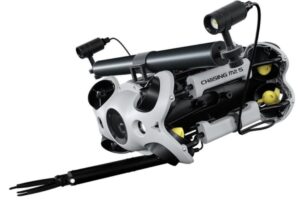
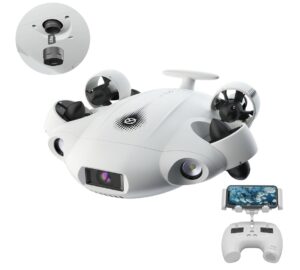


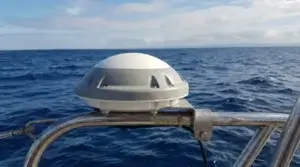
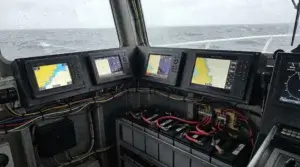
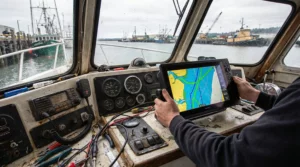
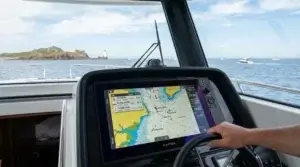
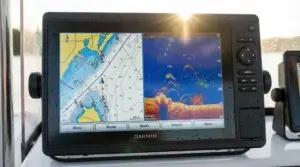
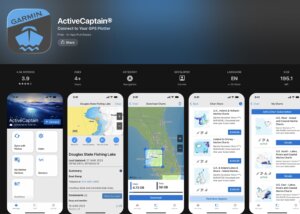

I do play with a small aerial drone and now moving a lot closer to the ocean would like to explore there as well….
I just looked up openrov as that looked really promising, but it appears that they have merged with spoondrift tech to create sofar ocean technologies – so now not really an option….
i was interested in how they will be navigating, could they be autonomous, how do they recover….
do you have any more information on hobbyist rov’s….
many thanks for the article
That sounds like an exciting move! Exploring the ocean with a drone opens up so many possibilities. It’s a shame about OpenROV, but there are still some great hobbyist ROV options out there. Brands like Blue Robotics (with their BlueROV2) and Chasing Innovation offer solid choices for underwater exploration. Some can be modified for autonomy, though most consumer-grade models rely on tethers for navigation and recovery. Are you looking for something fully autonomous or more of a manually controlled setup? Happy to share more info!
Hello
I find that this article provides an insightful and comprehensive exploration of underwater drones, shedding light on their mechanics, applications, and future potential. It effectively captures the evolution of these remarkable machines, from their military origins to their crucial roles in research, defense, industry, and recreation. The detailed breakdown of their working principles, challenges, and advancements offers a fascinating glimpse into the technology that enables deep-sea exploration. The comparison with regular drones and the discussion on leading manufacturers further enrich the reader’s understanding. Overall, this well-structured piece highlights the growing significance of underwater drones and their transformative impact on marine science and exploration.
I Have Five Mindful Questions:
1. How do underwater drones contribute to environmental conservation and sustainability efforts?
2. What are the key challenges that underwater drones face in deep-sea exploration, and how are researchers addressing them?
3. In what ways do the applications of underwater drones differ between scientific research and commercial industries?
4. How might advancements in artificial intelligence and battery technology revolutionize the future of underwater drones?
5. What ethical considerations should be taken into account to ensure that underwater drone usage does not harm marine ecosystems?
Thank you for your thoughtful and detailed feedback! I’m glad you found the article insightful and comprehensive. Your questions highlight crucial aspects of underwater drone technology, and I’d love to explore them further:
Environmental Conservation & Sustainability – Underwater drones assist in monitoring marine biodiversity, mapping coral reefs, tracking pollution, and studying climate change impacts. They play a key role in detecting illegal fishing activities and supporting ocean cleanup initiatives.
Challenges in Deep-Sea Exploration – Harsh pressure conditions, limited battery life, communication difficulties, and navigation constraints are major hurdles. Researchers are working on pressure-resistant materials, AI-powered autonomy, and advanced sonar systems to tackle these issues.
Scientific vs. Commercial Applications – While scientific research focuses on ecosystem monitoring, oceanography, and deep-sea exploration, commercial industries utilize underwater drones for infrastructure inspection, oil and gas exploration, underwater mapping, and aquaculture.
Future with AI & Battery Tech – AI advancements will enable greater autonomy, real-time data analysis, and adaptive decision-making, while improved battery technology will enhance endurance and operational depth, making drones more efficient.
Ethical Considerations – Ensuring that underwater drones do not disturb marine life, avoiding ecosystem disruption, preventing data misuse, and regulating their use in sensitive environments are key ethical concerns to address.
Your insightful questions open the door for further discussion! Would you like a deeper dive into any of these topics? 🚀🌊
Underwater drones are an incredibly exciting development in both the tech and exploration worlds. They offer new possibilities for marine research, search and rescue operations, and even underwater photography. With their ability to dive into deep, hard-to-reach places, they provide a valuable tool for exploring environments that were once inaccessible. I find it fascinating that these drones can not only capture high-quality images and videos but can also be used to monitor marine life, inspect underwater infrastructure, and gather important data about our oceans.
From personal experience, I think underwater drones have the potential to revolutionize how we understand the mysteries of the deep sea. They could play a crucial role in addressing environmental concerns, like monitoring coral reefs and detecting pollution. However, I do wonder about the challenges in terms of battery life, data transmission at great depths, and cost for personal use. Still, as the technology evolves, I believe these drones will become more accessible and useful for a variety of industries.
You make some great points! Underwater drones are indeed opening up new frontiers in exploration, conservation, and research. Their ability to reach extreme depths and collect valuable data is a game-changer for marine science and environmental monitoring. The challenges you mentioned—battery life, data transmission, and cost—are definitely areas where further advancements are needed. But as technology improves, we’ll likely see more efficient, affordable, and capable drones that can be used for everything from deep-sea discovery to protecting fragile ecosystems. It’s an exciting time for underwater exploration!
Underwater drones are a fascinating advancement in technology, providing new ways to explore the depths of oceans, lakes, and even hazardous underwater environments. Their applications range from marine research and environmental monitoring to recreational use and even underwater photography.
It’s interesting to see how these drones are evolving. Some models are equipped with high-resolution cameras, sonar capabilities, and even robotic arms for sample collection. Have you noticed any specific industries benefiting the most from this technology, or do you think their mainstream adoption will grow in the coming years?
Absolutely! Underwater drones are revolutionizing multiple industries. The marine research and environmental monitoring sectors have greatly benefited, allowing scientists to study marine life and underwater ecosystems with minimal disturbance. The oil and gas industry also relies on them for pipeline inspections and maintenance in deep-sea environments. Additionally, defense and security sectors use them for surveillance and mine detection.
As technology advances and costs decrease, I believe mainstream adoption will grow—especially in areas like underwater archaeology, search-and-rescue missions, and even recreational exploration. What are your thoughts on their potential impact in consumer markets?
Owning an underwater drone must be amazing. Especially one that can go under the sea and visit depths that we can’t. I am sure that these types of drones are very expensive, and I am sure that they have to be extra reinforced to protect from rust, especially if being used in salt water.
I can see how these drones would also be super helpful to environmentalists, who need to see the impact an oil rig is having on the environment for instance or to monitor how much pollution is entering the sea. The possibilities are endless.
Absolutely, you’re spot on! Underwater drones really open up a whole new world beneath the surface—literally. The technology has come a long way, and yes, the more advanced models that can dive deep and withstand the pressure and saltwater corrosion are definitely on the pricier side. But the value they bring, especially for environmental monitoring, is huge. Being able to access hard-to-reach areas and gather data without disturbing marine life makes them an incredible tool for researchers, conservationists, and even search and rescue teams. The potential really is endless!